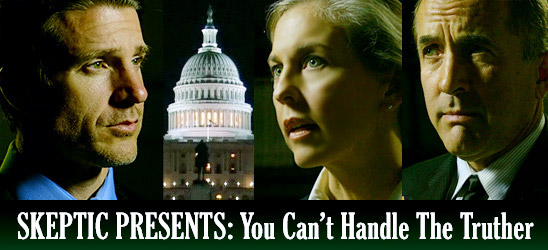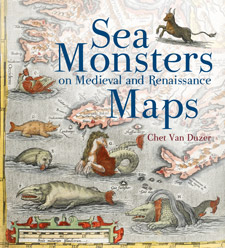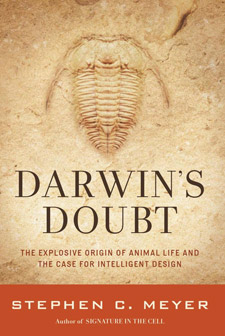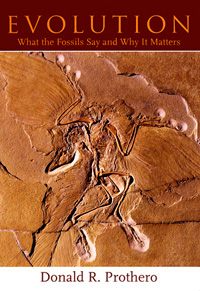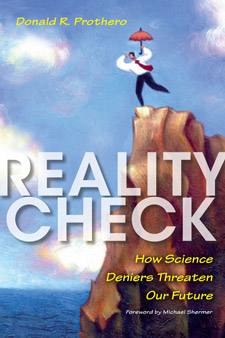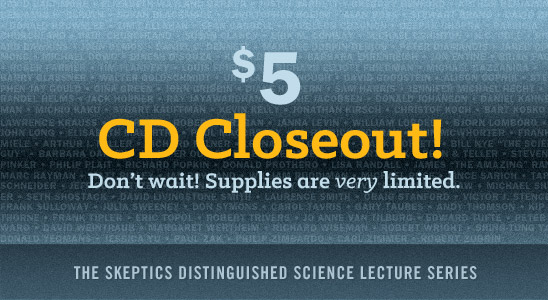In this week’s eSkeptic:
SKEPTIC PRESENTS
You Can’t Handle the Truther
We are pleased to present the third in our series of videos that promote science and critical thinking through the use of humor, wit, and satire. In this video, You Can’t Handle the Truther, CIA Agents plot the 9/11 attack on the Twin Towers and Pentagon. If you missed our first two videos, check them out: The Con Academy and B.Y.T.H Busters: The Secret Law of Attraction.
Help Us Make More Videos
If you would like to show your support, please make a tax-deductible donation to the Skeptics Society by clicking the button below. With your support, we hope to produce these instructional, educational, and entertaining videos regularly throughout the year for free viewing and use by everyone everywhere to spread the message of the power of science and skepticism to make the world a saner, safer place.
CREDITS: Special thanks to David Cowan, Daniel Mendez, and Jim Robinson for their support in launching this series of Skeptic videos.
Written and Produced by: Brian Keith Dalton, Michael Shermer, Pat Linse. Directed, lensed, and edited by: Brian Keith Dalton. Executive Producers: David Cowan, Daniel Mendez, Jim Robinson. Starring: Sean Douglas, Amy Rohren, Michael Shermer, Brian Keith Dalton. Production Assistants: Matthew David, Gediminas Schuppenhauer, Pat Linse. Music by: Videoblocks.com and Brian Keith Dalton. Additional Video from: Videoblocks.com. Shot on: a Canon C100

The Key to the Legend
of the Map Monsters
Join us for a fascinating look at the mysterious sea monsters that decorated medieval maps. We talk with Chet Van Duzer about his recent book Sea Monsters on Medieval and Renaissance Maps, which brings to light the remarkable sources behind the strange looking creatures which populate the seas of these beautiful old documents.
Chet Van Duzer is a writer and researcher and is currently an Invited Research Scholar at the John Carter Brown Library in Rhode Island. He has published extensively on medieval maps.
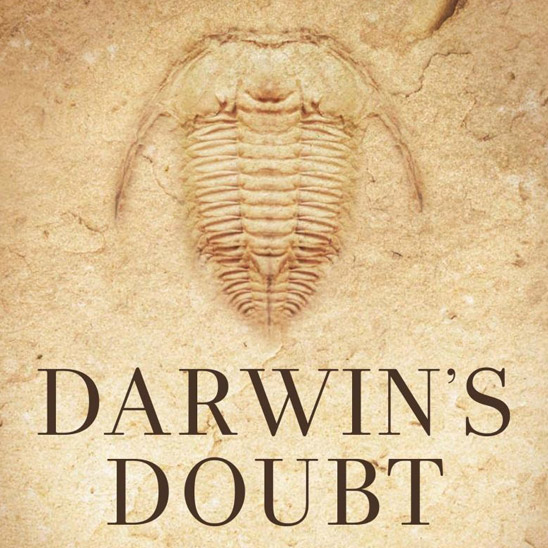
About this week’s eSkeptic
In this week’s eSkeptic, Donald R. Prothero reviews Darwin’s Doubt: The Explosive Origin of Animal Life and the Case for Intelligent Design by Stephen Meyer (HarperCollins, 2013). Read Prothero’s full bio after the article.
Stephen Meyer’s Fumbling Bumbling Amateur Cambrian Follies
a book review by Donald R. Prothero
“In everything the prudent acts with knowledge,
but a fool flaunts his folly.”
“Ignorance more frequently begets confidence than does knowledge.”
“The fool doth think he is wise, but the wise man knows himself
to be a fool.”
The Dunning-Kruger effect is a well-known phenomenon in psychology first named in 1998, but it has been recognized since before the Bible and Shakespeare. In a nutshell, it is (as Bertrand Russell put it) ”The trouble with the world is that the stupid are cocksure and the intelligent are full of doubt.” There is also another well-known psychological phenomenon: motivated reasoning. Our brains have many blind spots in them that allow us to reconcile the real world with the world as we want it to be, and reduce the clash of cognitive dissonance. The most familiar of these is confirmation bias, where we see only what we want to see, and ignore or forget anything that doesn’t fit our preferred world-view. When this bias emerges in argument, it takes the form of cherry-picking: finding a few facts out of context that seem to support what we want to believe, and ignoring everything else that contradicts what we are trying to promote.
The entire literature of creationism (and of its recent offspring, “intelligent design” creationism) works entirely on that principle: they don’t like any science that disagrees with their view of religion, so they pick tiny bits out of context that seem to support what they want to believe, and cherry-pick individual cases which fits their bias. In their writings, they are legendary for “quote-mining”: taking a quote out of context to mean the exact opposite of what the author clearly intended (sometimes unintentionally, but often deliberately and maliciously). They either cannot understand the scientific meaning of many fields from genetics to paleontology to geochronology, or their bias filters out all but tiny bits of a research subject that seems to comfort them, and they ignore all the rest.
Another common tactic of creationists is credential mongering. They love to flaunt their Ph.D.’s on their book covers, giving the uninitiated the impression that they are all-purpose experts in every topic. As anyone who has earned a Ph.D. knows, the opposite is true: the doctoral degree forces you to focus on one narrow research problem for a long time, so you tend to lose your breadth of training in other sciences. Nevertheless, they flaunt their doctorates in hydrology or biochemistry, then talk about paleontology or geochronology, subjects they have zero qualification to discuss. Their Ph.D. is only relevant in the field where they have specialized training. It’s comparable to asking a Ph.D. to fix your car or write a symphony—they may be smart, but they don’t have the appropriate specialized training to do a competent job based on their Ph.D. alone.
Stephen Meyer’s first demonstration of these biases was his atrociously incompetent book Signature in the Cell (2009, HarperOne), which was universally lambasted by molecular biologists as an amateurish effort by someone with no firsthand training or research experience in molecular biology. (Meyer’s Ph.D. is in history of science, and his undergrad degree is in geophysics, which give him absolutely no background to talk about molecular evolution). Undaunted by this debacle, Meyer now blunders into another field in which he has no research experience or advanced training: my own profession, paleontology. I can now report that he’s just as incompetent in my field as he was in molecular biology. Almost every page of this book is riddled by errors of fact or interpretation that could only result from someone writing in a subject way over his head, abetted by the creationist tendency to pluck facts out of context and get their meaning completely backwards. But as one of the few people in the entire creationist movement who has actually taken a few geology classes (but apparently no paleontology classes), he is their “expert” in this area, and is happy to mislead the creationist audience that knows no science at all with his slick but completely false understanding of the subject.
Let’s take the central subject of the book: the “Cambrian explosion”, or the apparently rapid diversification of life during the Cambrian Period, starting about 545 million years (m.y.) ago. When Darwin wrote about it in 1859, it was indeed a puzzle, since so little was known about the fossil record then. But as paleontologists have worked hard on the topic and learned a lot since about 1945 (as I discuss in detail in my 2007 book, Evolution: What the Fossils Say and Why it Matters). As a result, we now know that the “explosion” took place over an 80 m.y. time frame. Paleontologists are gradually abandoning the misleading and outdated term “Cambrian explosion” for a more accurate one, “Cambrian slow fuse” or “Cambrian diversification.” The entire diversification of life is now known to have gone through a number of distinct steps, from the first fossils of simple bacterial life 3.5 billion years old, to the first multicellular animals 700 m.y. ago (the Ediacara fauna), to the first evidence of skeletonized fossils (tiny fragments of small shells, nicknamed the “little shellies”) at the beginning of the Cambrian, 545 m.y. ago (the Nemakit-Daldynian and Tommotian stages of the Cambrian), to the third stage of the Cambrian (Atdabanian, 530 m.y. ago), when you find the first fossils of the larger animals with hard shells, such as trilobites.
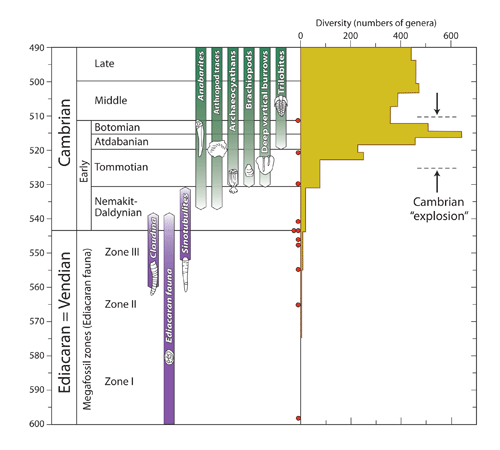
Figure 1: (Click image to download a printable PDF.)
Timescale of the Cambrian diversification event, showing the gradual and stepwise increase in diversity through the first three stages of the Early Cambrian. Meyer’s book completely ignores the existence of the first two stages (Nemakit-Daldynian and Tommotian Stages), and falsely asserts that all Cambrian forms abruptly arose in the third stage of the Cambrian (Atdabanian) stage, some 15 million years after the true beginning of the Cambrian.
Does Meyer reflect this modern understanding of the subject? No! His figures (e.g., Figs. 2.5, 2.6, 3.8) portray the “explosion” as if it happened all at once, showing that he has paid no attention to the past 70 years of discoveries. He dismisses the Ediacara fauna as not clearly related to living phyla (a point that is still debated among paleontologists), but its very existence is fatal to the creationist falsehood that multicellular animals appeared all at once in the fossil record with no predecessors. Even more damning, Meyer completely ignores the existence of the first two stages of the Cambrian (nowhere are they even mentioned in the book) and talks about the Atdabanian stage as if it were the entire Cambrian all by itself. His misleading figures (e.g., Fig. 2.5, 2.6, 3.8) imply that there were no modern phyla in existence until the trilobites diversified in the Atdabanian. That’s a flat out lie. Even a casual glance at any modern diagram of life’s diversification (Figure 1) demonstrates that probable arthropods, cnidarians, and echinoderms are present in the Ediacara fauna, mollusks and sponges are well documented from the Nemakit-Daldynian Stage, and brachiopods and archaeocyathids appear in the Tommotian Stage—all millions of years before Meyer’s incorrectly defined “Cambrian explosion” in the Atdabanian. The phyla that he lists in Fig. 2.6 as “explosively” appearing in the Atdabanian stages all actually appeared much earlier—or they are soft-bodied phyla from the Chinese Chengjiang fauna, whose first appearance artificially inflates the count. Meyer deliberately and dishonestly distorts the story by implying that these soft-bodied animals appeared all at once, when he knows that this is an artifact of preservation. It’s just an accident that there are no extraordinary soft-bodied faunas preserved before Chengjiang, so we simply have no fossils demonstrating their true first appearance, which occurred much earlier based on molecular evidence.
Meyer’s distorted and false view of conflating the entire Early Cambrian (545–520 m.y. ago) as consisting of only the third stage of the Early Cambrian (Atdabanian, 530–525 m.y. ago) creates a fundamental lie that falsifies everything else he says in the ensuing chapters. He even attacks me (p. 73) by claiming that during our 2009 debate, it was I who was improperly redefining the Cambrian! Even a cursory glance at any recent paleontology book on the topic, or even the Wikipedia site for “Cambrian explosion”, shows that it is Meyer who has cherry-picked and distorted the record, completely ignoring the 15 million years of the first two stages of the Cambrian because their existence shoots down his entire false interpretation of the fossil record. Sorry, Steve, but you don’t get to contradict every paleontologist in the world, ignore the evidence from the first two stages of the Cambrian, and redefine the Early Cambrian as the Atdabanian Stage just to fit your fairy tale!
Even if we grant the premise that a lot of phyla appear in the Atdabanian (solely because there are no soft-bodied faunas older than Chengjiang in the earliest Cambrian), Meyer claims the 5–6 million years of the Atdabanian are too fast for evolution to produce all the phyla of animals. Wrong again! Lieberman (2003) showed that rates of evolution during the “Cambrian explosion” are typical of any adaptive radiation in life’s history, whether you look at the Paleocene diversification of the mammals after the non-avian dinosaurs vanished, or even the diversification of humans from their common ancestor with apes 6 m.y. ago. As distinguished Harvard paleontologist Andrew Knoll put it in his 2003 book, Life on a Young Planet:
Was there really a Cambrian Explosion? Some have treated the issue as semantic—anything that plays out over tens of millions of years cannot be “explosive,” and if the Cambrian animals didn’t “explode,” perhaps they did nothing at all out of the ordinary. Cambrian evolution was certainly not cartoonishly fast … Do we need to posit some unique but poorly understood evolutionary process to explain the emergence of modern animals? I don’t think so. The Cambrian Period contains plenty of time to accomplish what the Proterozoic didn’t without invoking processes unknown to population geneticists—20 million years is a long time for organisms that produce a new generation every year or two. (Knoll, 2003, p. 193)
The mistakes and deliberate misunderstandings and misinterpretations go on and on, page after page. Meyer takes the normal scientific debates about the early conflicts about the molecular vs. morphological trees of life as evidence scientists know nothing, completely ignoring the recent consensus between these data sets. Like all creationists, he completely misinterprets the Eldredge and Gould punctuated equilibrium model and claims that they are arguing that evolution doesn’t occur—when both Gould and Eldredge have clearly explained many times (which he never cites) why their ideas are compatible with Neo-Darwinism and not any kind of support for any form of creationism. He repeats many of the other classic creationist myths, all long debunked, including the post hoc argument from probability (you can’t make the argument that something is unlikely after the fact). He wastes a full chapter on the empty concept of “information” as the ID creationists define it. He butchers the subject of systematic biology, using the normal debate between competing hypotheses to argue that scientists can’t make up their minds—when that is the ordinary way in which scientific questions are argued until consensus has been reached. He confuses crown-groups with stem-groups, botches the arguments about recognition of ancestors in the fossil record, and can’t tell a cladogram from a family tree. He blunders through the fields of epigenetics and evo-devo and genetic drift as if they completely falsified Neo-Darwinism, rather than as scientists view them—as supplements to our understanding of it. (Even if they did somehow shoot down some aspects of Neo-Darwinism, they are providing additional possible mechanisms for evolution, something he supposedly does not believe in!). In short, he runs the full gamut of topics in modern evolutionary biology, managing to distort or confuse every one of them, and only demonstrating that he is completely incapable of understanding these topics.
In several places in the book, he shows his pictures of the Cambrian sections in China, or talks in the final chapter about visiting the Burgess Shale in Canada (a Middle Cambrian locality, millions of years after the “Cambrian explosion” was long over), as if to establish his street-cred that he at least got away from his office and computer once in a while. Visiting these famous places like a tourist doesn’t qualify you to write a guidebook of the complexity of the fossils that were recovered there. If he had actually done the hard work of learning about paleontology and doing the research in the field himself (as real scientists have), we might take him seriously. As it is, this book only demonstrates that Meyer can completely misunderstand, misinterpret and misread subjects like paleontology just as badly as he botched his interpretation of molecular biology. (For a good account by real paleontologists who know what they’re doing, see the excellent recent book by Valentine and Erwin, 2013, which gives an accurate view of the “Cambrian diversification”).
Finally, one might wonder: what’s all the fuss about the “Cambrian explosion”? Why should it matter whether evolution was fast or slow during the third stage of the Cambrian? Some scientists might find this puzzling, but you must understand the minds of creationists. They operate by a “god of the gaps” argument: anything that is currently not easily explained by science is automatically attributed to supernatural causes. Even though ID creationists say that this supernatural designer could be any deity or even extraterrestrials, it is well documented that they are thinking of the Judeo-Christian god when they point to the complexity and “design” of life. They argue that if scientists haven’t completely explained every possible event of the Early Cambrian, science has failed and we must consider supernatural causes.
Of course, this is a lie. For one thing, Meyer’s description of the “Cambrian explosion” is distorted and false, since he deliberately ignores the events of the first two stages of the Cambrian. Secondly, this “god of the gaps” approach is guaranteed to fail, because scientists have explained most of the events of the Early Cambrian and find nothing out of the ordinary that defies scientific explanation. Only a few details remain to be worked out. As our fossil record of that time interval improves and we understand it even better, there will be nothing left for the creationists to point to that might require supernatural intervention. This is a losing strategy for them in every possible way.
In short, Meyer has shown that his first disastrous book was not a fluke: he is capable of going into any field in which he has no training or research experience and botching it just as badly as he did molecular biology. As I’ve written before, if you are a complete amateur and don’t understand a subject, don’t demonstrate the Dunning-Kruger effect by writing a book about it and proving your ignorance to everyone else! Some people with creationist leanings or little understanding of paleontology might find this long-winded, confusingly written book convincing, but anyone with a decent background in paleontology can easily see through his distortions and deliberate misunderstandings and misinterpretations. Even though Amazon.com persists in listing this book in their “Paleontology” subsection, I’ve seen a number of bookstores already which have it properly placed in their “Religion” section—or even more appropriately, in “Fiction.” ![]()
References
- Erwin, D., and J.W. Valentine. 2013. The Cambrian Explosion: The Construction of Biodiversity. Roberts and Company, Publishers, New York.
- Knoll, A.H. 2003. Life on a Young Planet: The First Three Billion Years of Life on Earth. Princeton University Press, Princeton, NJ.
- Lieberman, B.S. 2003. Taking the pulse of the Cambrian radiation. Integrative and Comparative Biology 43:229–237.
- Prothero, D.R. 2007. Evolution: What the Fossils Say and Why it Matters. Columbia University Press, New York.
About the Author

DR. DONALD R. PROTHERO was Professor of Geology at Occidental College in Los Angeles, and Lecturer in Geobiology at the California Institute of Technology in Pasadena. He earned M.A., M.Phil., and Ph.D. degrees in geological sciences from Columbia University in 1982, and a B.A. in geology and biology (highest honors, Phi Beta Kappa) from the University of California, Riverside. He is currently the author, co-author, editor, or co-editor of 32 books and over 250 scientific papers, including five leading geology textbooks and five trade books as well as edited symposium volumes and other technical works. He is on the editorial board of Skeptic magazine, and in the past has served as an associate or technical editor for Geology, Paleobiology and Journal of Paleontology. He is a Fellow of the Geological Society of America, the Paleontological Society, and the Linnaean Society of London, and has also received fellowships from the Guggenheim Foundation and the National Science Foundation. He has served as the President and Vice President of the Pacific Section of SEPM (Society of Sedimentary Geology), and five years as the Program Chair for the Society of Vertebrate Paleontology. In 1991, he received the Schuchert Award of the Paleontological Society for the outstanding paleontologist under the age of 40. He has also been featured on several television documentaries, including episodes of Paleoworld (BBC), Prehistoric Monsters Revealed (History Channel), Entelodon and Hyaenodon (National Geographic Channel) and Walking with Prehistoric Beasts (BBC). His website is: www.donaldprothero.com. Check out Donald Prothero’s page at Shop Skeptic.


